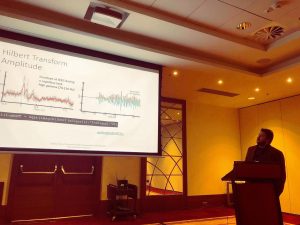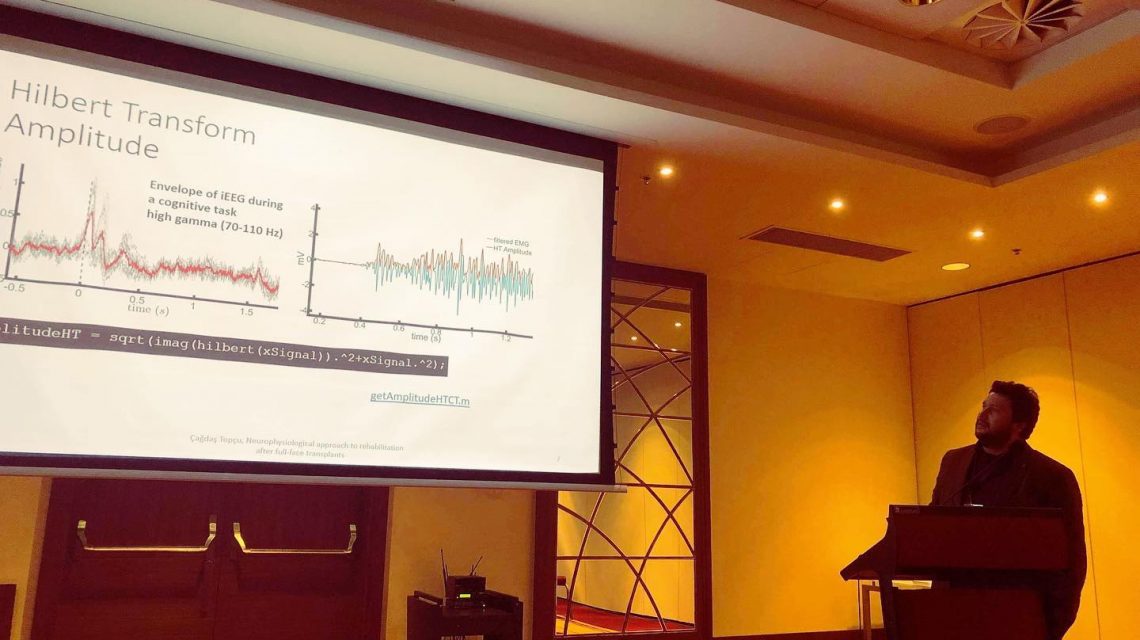Our methods presented on the 17th European Congress of Clinical Neurophysiology in Warsaw 21 June 2019 – Posted in: news – Tags: Active electrode, Akdeniz University, Brain, Cagdas Topcu, Clinical Neurophysiology, Congress, Doctoral, early stage researcher, ECoG, EEG, Hilmi Uysal, Mayo Clinic, Memory, neurology, Neuroscience, presentation, Science, signal processing, Warsaw
 Cagdas Topcu – the early stage researcher in our BME lab – shared his ideas on the largest gathering of clinical neurophysiologists in Europe, which took place this June in the capital of Poland. His presentation entitled: ‘Data-driven selection of active iEEG channels during verbal memory task performance’ described new approaches to fully automatic and patient-specific selection of electrodes with meaningful electrophysiological activities recorded in patients trying to remember list of words. The goal of his work was to increase reliability and objectivity in selecting signals used for brain stimulation, clinical evaluation, or studies of memory and other cognitive functions. The results were selected for publication as a conference paper in Clinical Neurophysiology journal:
Cagdas Topcu – the early stage researcher in our BME lab – shared his ideas on the largest gathering of clinical neurophysiologists in Europe, which took place this June in the capital of Poland. His presentation entitled: ‘Data-driven selection of active iEEG channels during verbal memory task performance’ described new approaches to fully automatic and patient-specific selection of electrodes with meaningful electrophysiological activities recorded in patients trying to remember list of words. The goal of his work was to increase reliability and objectivity in selecting signals used for brain stimulation, clinical evaluation, or studies of memory and other cognitive functions. The results were selected for publication as a conference paper in Clinical Neurophysiology journal:
https://www.sciencedirect.com/science/article/abs/pii/S1388245719304948
Cagdas also attended a series of courses about processing and analysis of electrophysiological signals from the human brain and about their relevance for understanding and treating epilepsy.

